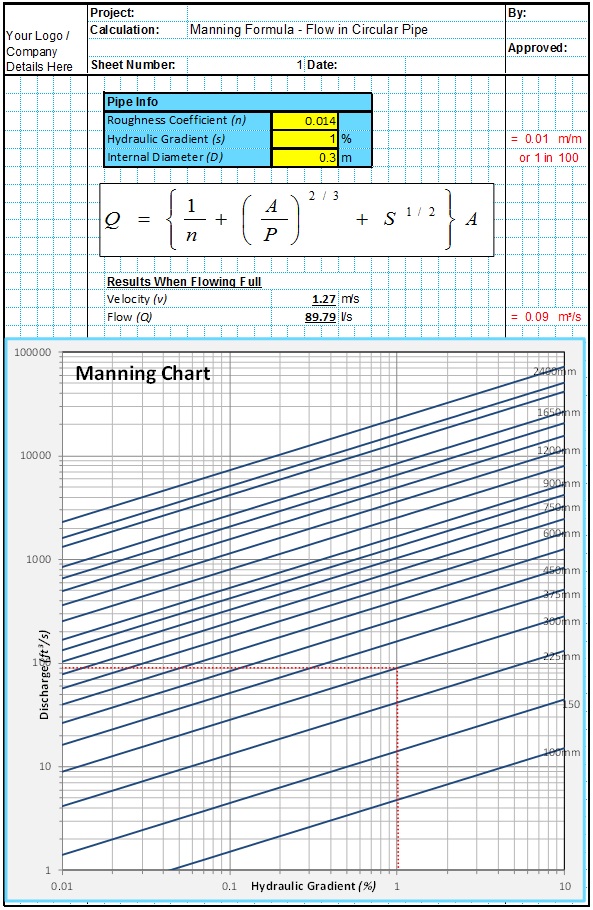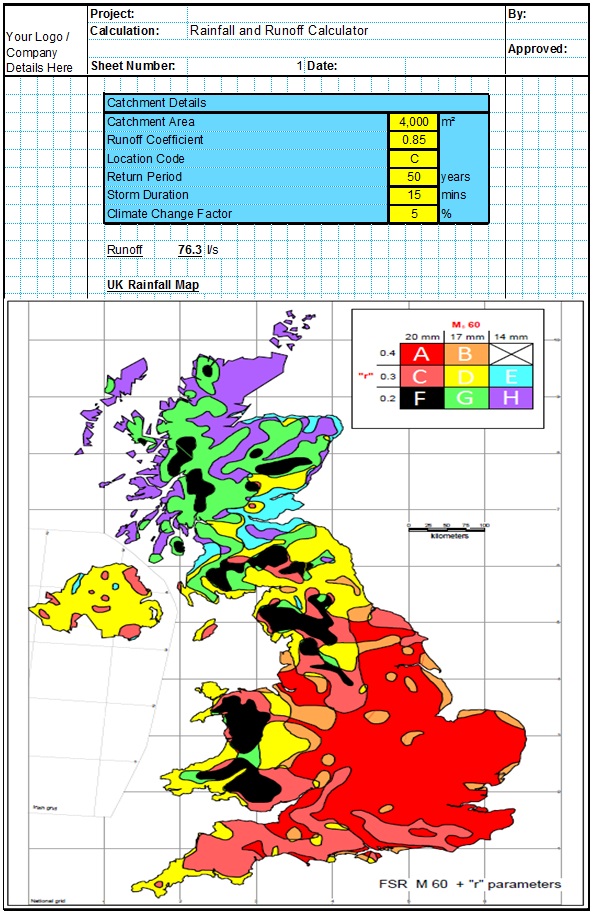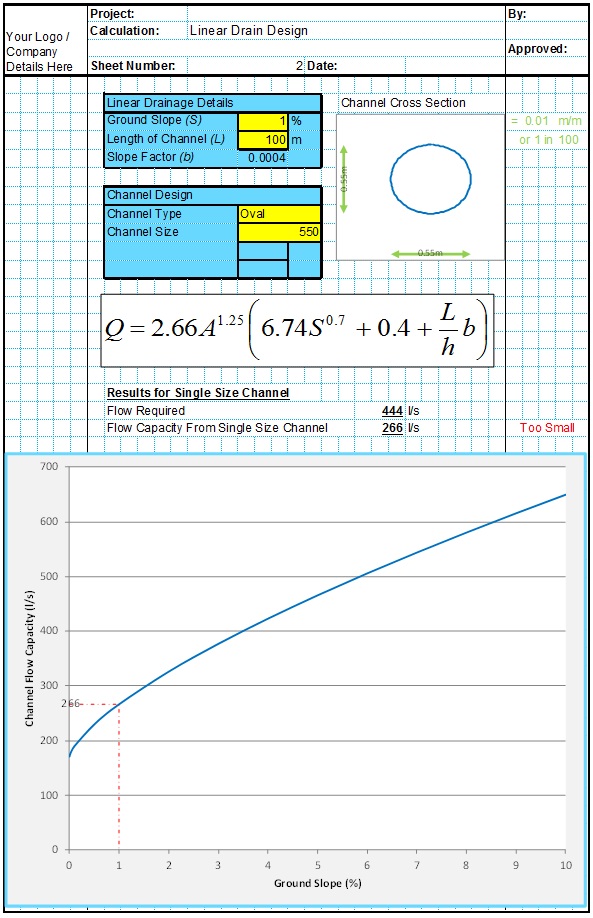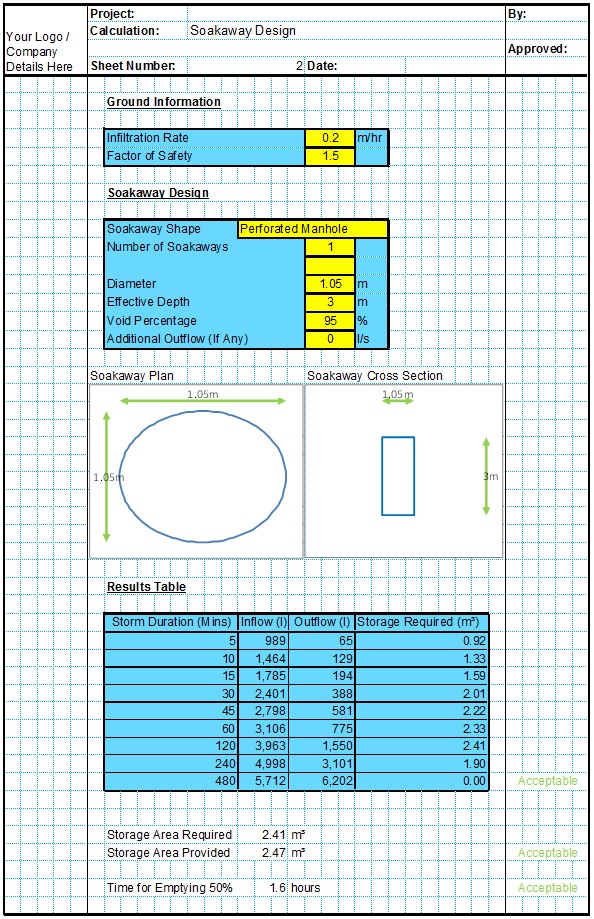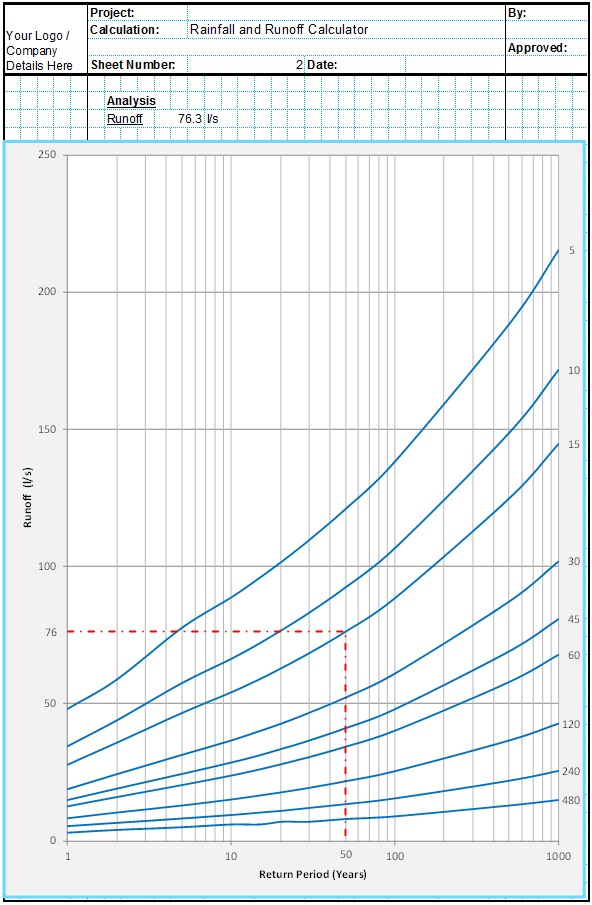Infiltration Rate
The Infiltration Rate of a soil is the velocity at which water is able to travel through the soil. For a Soakaway application the Infiltration Rate describes the rate at which water can soak into the ground from the soakaway. This rate is only applicable where there is at least 1m clearance above the maximum height of the water table. Where the soil is already saturated by ground water the infiltration rate will reduce to zero. The procedure for calculating Infiltration Rate is described here.
This value can vary from more than 10m of water per hour down to virtually nothing depending on the type of soil. This is largely because of the differences in porosity and void ratio for different soils, but can also be affected by factors such as structure, packing, swelling clay content and by the presence of any large voids or fissures. Typical values for soil Infiltration Rate.
Note that the Infiltration Rate for a given soil surrounding a soakaway will usually reduce over time. This is because the voids in the surrounding soils slowly become clogged with sediments from the water. This effect can be reduced with regular maintenance of the soakaway and by pre-treating the incoming water. Pre-treatment is also an option where pollutants are likely in the incoming water. Geotextiles can be used to prevent sediment from travelling into the surrounding soils, but this will need to be removed regularly to prevent the soakaway becoming blocked. For this reason a factor of safety is included in the design Infiltration Rate to allow for this reduction. This factor should take into account the consequences of failure. Typical rates are given below.

Infiltration and soakaway systems should not be used either where the existing ground is contaminated, or where there is a chance that the incoming water may be polluted.
Advice should also be sought from a suitably qualified Geotechnical Engineer to ensure that the infiltration of water will not have any destabilising effects on the surrounding soils.
Related Spreadsheets from CivilWeb;
Colebrook White Pipe Design Spreadsheet
This spreadsheet uses the Colebrook-White and Darcy-Weisbach formulas to calculate the flow conditions in a circular pipe acting under gravity.
Find Out More
Manning Pipe Design Spreadsheet
This spreadsheet uses the Manning formula to calculate the flow conditions in a circular pipe acting under gravity only.
Learn More
Manning Open Channel Design Spreadsheet
This spreadsheet uses the Manning formula to calculate the flow conditions in an open channel acting under gravity only.
Learn More
Runoff Calculator Spreadsheet
This spreadsheet calculates the design runoff flow for a site in accordance with the Flood Estimation Handbook.
Learn More
Linear Drainage Design Spreadsheet
This spreadsheet calculates the maximum flow from a specified linear drainage channel and checks whether the channel is sufficient for the specified site and storm conditions.
Learn More
Attenuation Design Spreadsheet
This spreadsheet calculates the requirements for a attenuation system and assists the user to design a suitable system.
Learn More
Soakaway Design Spreadsheet
This spreadsheet calculates the requirements for a soakaway system and assists the user to design a suitable system.
Learn More
Full Drainage Design Suite
Full drainage design suite (50% Discount) including 7 spreadsheets;
- Colebrook White Pipe Design
- Manning Pipe Design
- Manning Open Channel Design
- Linear Drainage Design
- Runoff Calculator
- Attenuation Design
- Soakaway Design

